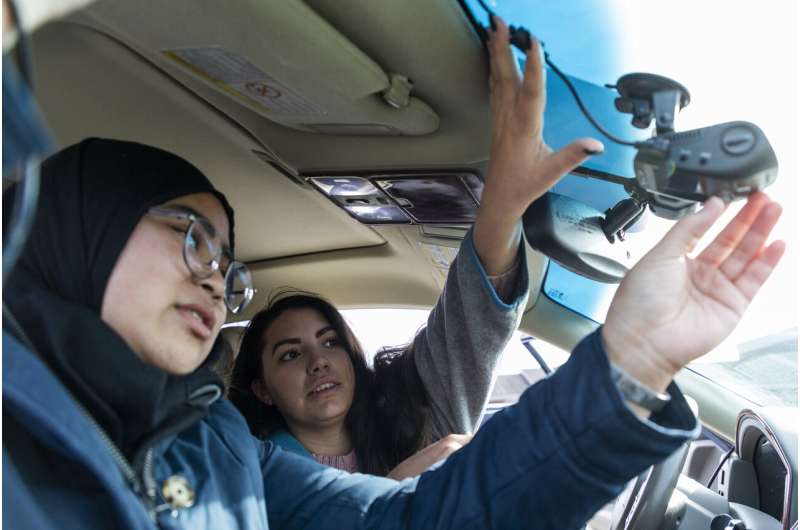Women commuting during rush hour are exposed to higher levels of pollutants

Studies have shown associations between exposure to traffic-related air pollution and adverse health outcomes, including preterm birth and low birthweight. However, few studies have estimated real-world exposures during personal vehicle trips for women commuters.
New research led by George Mason University's College of Health and Human Services faculty found higher exposure to harmful pollutants during rush hour trips compared to other settings. Dr. Jenna Krall led the study published in Environmental Research.
Krall and colleagues conducted the first study to use personal air pollution monitors with vehicle monitors to measure women's exposure to fine particulate matter air pollution (PM2.5), one pollutant emitted by traffic. They collected data across 48-hour periods among their sample of 46 women with a mean age of 26 commuting in the Washington, D.C. metropolitan area.
"Women frequently have different commute patterns compared to men, for example due to increased trips for household errands and/or transporting children," explains Krall. "With this difference and adverse birth outcomes found in previous research, we believed it was important to focus on this population."
The researchers did not find differences in PM2.5 exposures based on trip length, which might not be reflective of factors like traffic volume that impact exposures.
"Reducing vehicle trips might be one way to reduce PM2.5 exposures, and subsequently air pollution associated health effects," explains Krall. "This is particularly important for vulnerable populations, such as pregnant women."
In future work, the researchers plan to use additional vehicle data such as traffic and speed to better understand these exposures.
More information: Jenna R. Krall et al, Estimating exposure to traffic-related PM2.5 for women commuters using vehicle and personal monitoring, Environmental Research (2020). DOI: 10.1016/j.envres.2020.109644
Journal information: Environmental Research
Provided by George Mason University



















